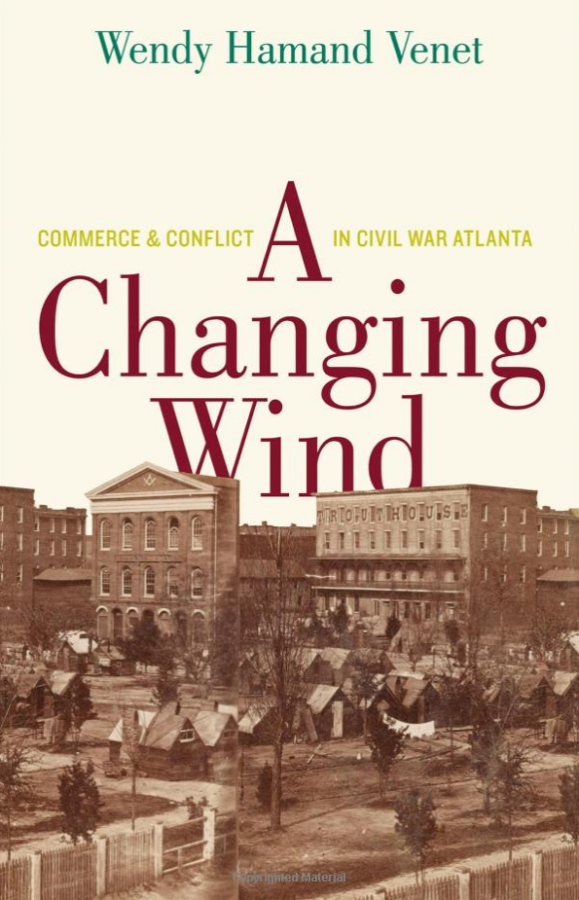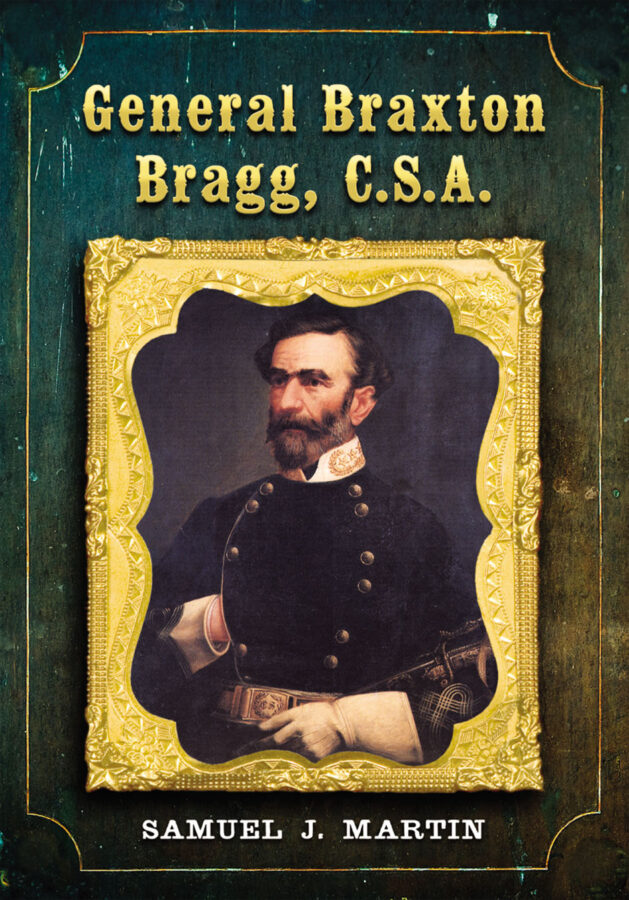A Changing Wind: Commerce & Conflict in Civil War Atlanta by Wendy Hamand Venet. Yale University Press, 2014. Cloth, ISBN: 978-0-300-19216-2. $30.00.
 Wendy Venet’s interesting new social history of Atlanta during the Civil War era begins and ends in Oakland Cemetery—the city’s burial ground for slaveholders and slaves, rich and poor alike. And yet her narrative arc emphasizes Atlanta’s birth and rebirth. Aiming to unsettle the plantation myths and legends of Margaret Mitchell’s Gone with the Wind, Venet shows that to understand Atlanta’s early history, we must recognize the significance of a variety of ambitious speculators—entrepreneurs, politicians, soldiers, benevolent reformers, consumers, and slaves—who built, tore down, and rebuilt an urban social order. Atlanta’s past, moreover, provides us with an opportunity to reconsider how the Civil War both made and unmade cities. Grounded in a variety of compelling primary sources—from diaries and letters, to business records, government documents, and newspapers—this book encourages us to focus on how the southern middle class, urban development, and the war influenced and shaped each other. It deserves a wide readership.
Wendy Venet’s interesting new social history of Atlanta during the Civil War era begins and ends in Oakland Cemetery—the city’s burial ground for slaveholders and slaves, rich and poor alike. And yet her narrative arc emphasizes Atlanta’s birth and rebirth. Aiming to unsettle the plantation myths and legends of Margaret Mitchell’s Gone with the Wind, Venet shows that to understand Atlanta’s early history, we must recognize the significance of a variety of ambitious speculators—entrepreneurs, politicians, soldiers, benevolent reformers, consumers, and slaves—who built, tore down, and rebuilt an urban social order. Atlanta’s past, moreover, provides us with an opportunity to reconsider how the Civil War both made and unmade cities. Grounded in a variety of compelling primary sources—from diaries and letters, to business records, government documents, and newspapers—this book encourages us to focus on how the southern middle class, urban development, and the war influenced and shaped each other. It deserves a wide readership.
Atlanta was a brand new city in 1861, emerging during the previous decade from the hard work of enterprising boosters and laborers who contributed to the production, sale, and circulation of goods via the railroads that connected the city to the Atlantic coast, the Appalachian Mountains, and the West. Entrepreneurial men and their wives sought to rein in the disorderly society that rampant commercial and industrial development created, policing its rougher elements, fostering benevolence societies, and managing a flexible and lucrative form of slavery in which many slaves were hired out or “hire[d] their own time” (8).
The coming of the secession crisis produced the first in a series of convulsions that unsettled the social harmony that bourgeois types had fostered. Secessionists such as Lucius J. Gartrell promoted a political and paternalistic defense of white Georgians’ constitutional rights to slave ownership, yet many Atlanta businessmen were Unionists; a majority of those polled in the 1860 presidential election chose either John Bell or Stephen A. Douglas.
But those same commercial and industrial leaders swung behind Gartrell after Abraham Lincoln’s triumph, believing that southern independence would open economic opportunities that they associated with “free trade” with Europe and diminish the social threats posed by high unemployment and potential slave insurrection (27). Venet contends that while a few Unionists bravely maintained their political principles during the war, many turned into “profit-based secessionis[ts]” who sought to prosper from contracts with the Confederate government and the institution of slavery upon which the new nation was founded (29). “Energy” defined Confederate Atlanta, for the ingenuity and speculation of businessmen and professionals (as well as the backbreaking labor of white artisans and black slaves) made the city into an industrial behemoth (51). “Energy” was a political watchword that linked hard work to the new nation’s independence. Even ambitious consumers were expected to be energetic, making purchases that validated the ambitious speculations of producers and businessmen. “Energy” also served as an explanation for the personal successes (or lack thereof) of people as varied as the blockade-running merchant Sidney Root and the successful enslaved barber Robert Webster, who ran a currency exchange on the side.
So too did Confederate reversals and wartime suffering make Atlanta the South’s “Gate City.” Wounded soldiers rode or limped in from battlefields throughout the South to fill its hospitals. Military defeats sent businessmen, women, and children as refugees from Union-occupied Tennessee and northern Georgia into the city in search of brighter economic horizons and new homes. The war also increased economic inequality in the city. Industrialization in the clothing trades, borne of military demand, forced soldiers’ wives to sew uniforms for low wages while competing with comparatively well-to-do women doing the same labor as “charitable” work free of charge. Depreciating currency and high prices produced even more desperate want that, in turn, burdened bourgeois women such as Martha Winship, who operated benevolent societies. By the end of 1863, the city government was spending more than one-third of its annual expenditures on poor relief. Atlanta was already a city when the war began, but the conflict made it truly urban, shaped by both the economic opportunities and the crushing problems of inequality that attended all nineteenth-century American cities.
The war also destroyed Atlanta and the society that white proprietors and professionals had created. The urban pressures that built up over the course of the conflict could not be contained by peppy public displays of nationalism revolving around popular commanders such as the cavalryman John Hunt Morgan. The rapidly fluctuating value of currency and goods ultimately led many “profit-based secessionists” to question the value of the nation. Refugees and soldiers continued to pour into and through Atlanta, placing immense stress on the benevolent infrastructure. While prices for slaves climbed during the war, the Confederate policy of impressment also made slaveholders uncertain that they would continue to benefit from the labor of their bondsmen. The Emancipation Proclamation and the arrival of Union troops near the city added to these concerns. Slaves ran away, dooming the institution slowly but surely (although Venet has unearthed interesting evidence that at least a few white Atlantans continued to purchase slaves after the end of the war, before the passage of the Thirteenth Amendment abolished the institution). The annihilation, capture, and looting of the city by soldiers under the command of William Tecumseh Sherman in 1864 emerges in Venet’s narrative as a fitting metaphor for a city already ripped apart by the forces of war and urbanization. After the war, the city rose to prominence once again as an exemplar of the “New South.” Yet as Venet correctly asserts, the foundations of Atlanta’s postbellum industrial development and social inequality are clearly evident in the city’s antebellum and wartime history.
Brian P. Luskey is associate professor of history at West Virginia University. He is the author of On the Make: Clerks and the Quest for Capital in Nineteenth-Century America (2010), and is writing a book about recruitment fraud in the Union Army.

